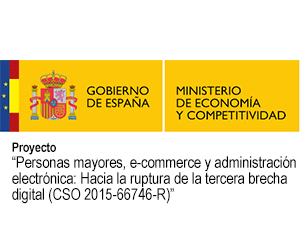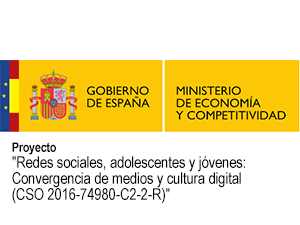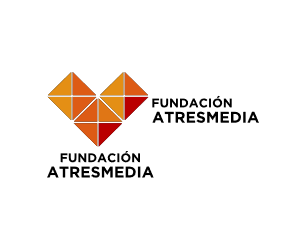Resumen
Los menores están creciendo en un sistema de convergencia mediática (Ito et al., 2009) que les proporciona oportunidades para la socialización, la auto-expresión, el aprendizaje, la creatividad y la participación a través de los medios online y, crecientemente, los medios móviles (Hjorth & Goggin, 2009; Goggin, 2010; Goggin & Hjorth, 2014). Sin embargo, además de las oportunidades que ofrece Internet, los niños y niñas también experimentan riesgos evidenciando la interdependencia de ambos (Livingstone et al., 2011): cuanto más usan los menores internet, mayor es la gama de oportunidades que tienen y mayor es la exposición a experiencias de riesgo.
Los medios móviles (smartphones y tabletas) permiten tener a los menores unos hábitos más flexibles y personalizados, y crear nuevas oportunidades de uso privado dentro del hogar, la escuela y el espacio público. El proyecto Net Children Go Mobile[1], en el que han participado Dinamarca, Italia, Reino Unido, Rumanía, Bélgica, Irlanda, Portugal y España, se basa en el análisis de esta nueva realidad y de sus posibles consecuencias para la infancia y sus familias. Esta comunicación presenta los resultados más significativos de este proyecto en España a partir de la encuesta realizada a 500 menores españoles usuarios y usuarias de internet de entre 9 y 16 años y a su padre o a su madre. A los padres y madres se les preguntó sobre su uso de internet y de dispositivos móviles y sus estrategias de mediación, así como cuestiones socio-demográficas y su nivel educativo.
Durante la pasada década el número de investigaciones sobre riesgos para menores en internet ha sido considerable[2]. Sin embargo, la mayoría de los estudios se han centrado en riesgos específicos en ciertos países, en lugar de abordar la experiencia del riesgo y el daño en su conjunto y desde una perspectiva comparativa.
Uno de los mayores hallazgos de este proyecto es que las experiencias de riesgo online no conducen necesariamente al daño, tal y como indicaron los propios menores (Livingstone et al., 2011). De hecho, la investigación EU Kids Online mostró que los niños y niñas que se encuentran con mayor número de riesgos en línea no son necesariamente quienes sufren consecuencias más dañinas; por el contrario, normalmente son ellos quienes demuestran más habilidades y desarrollan más resiliencia.
Por otra parte, los niños y niñas que están menos expuestos tanto a las oportunidades como a los riesgos tienden a sentirse más molestos y preocupados cuando sufren una experiencia online negativa. Tanto entre los mayores, expuestos a más riesgos pero más resistentes, como entre los pequeños, que participan en menos actividades y se enfrentan, por tanto, a menos riesgos, la vulnerabilidad online y offline van de la mano. Por eso el daño fue medido de forma subjetiva en función de lo que indicaban las respuestas de los menores ante las experiencias de riesgo.
[1] El campo cuantitativo en España se financió a través del Proyecto CSO2013-47304-R del MINECO.
[2] Para una revisión de evidencias europeas, ver Ólafsson et al., 2013.
Palabras Clave / ciberacoso / encuentros offline / Internet / menores / riesgos / sexting
Abstract
Children are growing up in a system of media convergence (Ito et al., 2009) that provides opportunities for socialization, self-expression, learning, creativity and participation through online media and, increasingly, mobile media (Hjorth & Goggin, 2009; Goggin, 2010; Goggin & Hjorth, 2014). However, in addition to the opportunities offered by the Internet, children also experience risks (cyberbullying, sexting, meeting strangers, etc.) intrinsically involved in its use (Livingstone et al., 2011): the more children use the Internet, the greater the range of opportunities they have and the greater the exposure to risk.
Mobile media (smartphones and tablets) allow children to have more flexible and personalized habits, and create new opportunities for privacy of use within the home, school and public spaces. The Net Children Go Mobile[1] project in which Denmark, Italy, the United Kingdom, Romania, Belgium, Ireland, Portugal and Spain have participated, is based on the analysis of this new reality and its possible consequences for children and their families. This paper presents the most significant results of this project in Spain from the survey of 500 Spanish children between 9 and 16 years old who are Internet users and their father or mother. Parents were asked about their children’s use of the Internet and mobile devices, parental mediation strategies, together with socio-demographic information and level of education.
Over the past decade, there has been a considerable amount of research into the risks for children on the Internet[2]. However, most studies have focused on specific risks in certain countries, rather than addressing the experience of risk and harm as a whole and from a comparative perspective.
One of the main findings of this study is that online risk experiences do not necessarily lead to harm, as indicated by the children themselves. In fact, the EU Kids Online research showed that children who face the greatest number of online risks are not necessarily the ones who suffer the most harmful consequences; on the contrary, it is usually they who have greater skills and develop more resilience.
On the other hand, children who are less exposed to both opportunities and risks tend to feel more upset and worried when they suffer a negative online experience. Both among the older children, who are exposed to more risks but are more resilient, and among the younger ones, who participate in fewer activities and, therefore, face fewer risks, there is a direct correlation between a lack of experience of use and vulnerability. Therefore, any harm suffered by the children who were faced with experiences involving risk was measured in a subjective way by the children’s own perception of it.
[1] The quantitative field research in Spain was financed through the Project CSO2013-47304-R from MINECO.
[2] For a review of European data, see Ólafsson et al., 2013.
Keywords / children / cyberbullying / Internet / meeting strangers / risks / sexting
FIRMANTES
| Nombre | Adscripción | Procedencia |
|---|---|---|
| Carmelo Garitaonandia | Universidad del Pais Vasco | España |
| Iñaki Karrera | Universidad del Pais Vasco | España |
| Nekane Larrañaga | Universidad del Pais Vasco | España |















